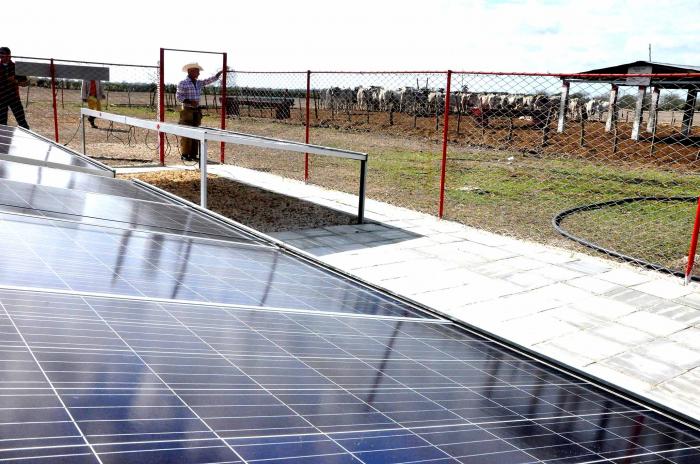The change in the energy matrix for water supply has, to date, allowed an annual saving of 9.8 gigawatt hours and around 700 tonnes of fuel
The water supply service in the country remains a complex issue, given the electrical instability for pumping and the drought, a situation affecting thousands of customers.
To help alleviate the problem, the aqueduct system is implementing a programme to change the energy matrix for water supply, which, to date, has saved 9.8 gigawatt hours annually and around 700 tonnes of fuel.
The newly installed pumps, with a capacity of ten kilowatts (kW), replace some that were previously connected to the National Electricity System (SEN) or cover positions lacking equipment, to where water was previously moved by tanker trucks.
This saving enables the Aqueduct and Sewer Company to reserve, for other purposes, close to 46.7 million pesos per year, detailed Alain Nkumu Díaz, senior specialist in Water Resource Management and Control at the Business Management Superior Organization (OSDE) Water and Sanitation, to Granma.
As it constitutes the second highest consumer of electricity, he explained, the proliferation of solar systems reduces this dependence on the SEN and its associated cost.
In a recent interview with this newspaper, Antonio Rodríguez Rodríguez, president of the National Institute of Water Resources, stated that the 722 units corresponding to the first stage of the energy matrix change programme have already been installed, in pumping stations of less than ten kilowatts.
Regarding the second group, Nkumu Díaz reported that they have completed the total delivery, with 74 to the Villa Clara Company and 70 to Aguas Turquino of Santiago de Cuba, and work has been completed on 19 and 60 respectively so far, but they continue working to complete this stage of the schedule, he expressed.
He added that the companies of Artemisa, Matanzas, Cienfuegos, Sancti Spíritus, Ciego de Ávila and Las Tunas have already concluded. The goal, he pointed out, is to benefit around 793 287 inhabitants, of which 59% has already been reached, equivalent to 468 780 people.According to the most recent data, 716 motors are functioning. The majority of the unavailable ones have issues with the power cards, a component of the controllers, while some appear burnt out, he argued.
He recounted that they have faced 35 incidents of theft and vandalism, including 15 pump thefts; added to a few systems paralysed by the hydrological state of the sources.
Regarding the installation, the specialist from Water and Sanitation highlighted that the allocation of fuel below the necessary figure impacts them, the exodus of qualified personnel from the companies, and the shortage of various resources, including cranes responsible for lifting the equipment, specialised cables and other components, lists Nkumu Díaz.
He emphasised the importance of supply chains: with the Comprehensive Security Services Company S.A. and the Copextel Corporation s.a. they carry out earthworks; Aguas del Oeste manufactures the piling for the panel structures, the Hidrotec International Economic Association provides technical solutions, while Panelec collaborates, through an innovation, for extra protection against power surges.
He advanced that they are currently seeking financing alternatives to assume the 446 units of the third batch, and thus complete the 1 312 stations under ten kW planned for change. In parallel, they are presenting projects, in the study phase, aiming to secure financing for a more ambitious programme with devices of up to 30 kW, he added.




